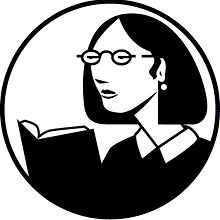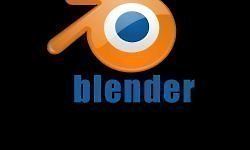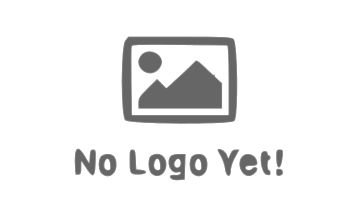-
Урок 1.
00:00:37
Welcome
-
Урок 2.
00:00:28
System requirements
-
Урок 3.
00:00:35
Using the exercise files
-
Урок 4.
00:06:56
Overview of the Maya interface
-
Урок 5.
00:02:37
Working with files and Maya projects
-
Урок 6.
00:07:51
Configuring viewports
-
Урок 7.
00:04:29
Navigation
-
Урок 8.
00:03:04
Using the hotbox and marking menus
-
Урок 9.
00:03:50
Customizing the interface
-
Урок 10.
00:05:46
Selecting objects
-
Урок 11.
00:05:03
Using the Move tool
-
Урок 12.
00:02:20
Rotating and scaling
-
Урок 13.
00:03:21
Manipulating pivots
-
Урок 14.
00:03:06
Duplicating objects
-
Урок 15.
00:02:25
Understanding the Channel Box
-
Урок 16.
00:03:18
Working with the Attribute Editor
-
Урок 17.
00:03:30
Resetting and freezing transformations
-
Урок 18.
00:02:56
Snapping objects
-
Урок 19.
00:06:30
Working with the Outliner
-
Урок 20.
00:05:19
Creating hierarchies
-
Урок 21.
00:04:51
Grouping objects
-
Урок 22.
00:02:08
Using groups as pivots
-
Урок 23.
00:06:05
Understanding the Hypergraph
-
Урок 24.
00:05:37
Hiding and showing objects
-
Урок 25.
00:04:38
Creating layers
-
Урок 26.
00:02:30
Working with selection masks
-
Урок 27.
00:01:39
Differences between NURBS and polygons
-
Урок 28.
00:06:42
Creating polygonal objects
-
Урок 29.
00:05:58
Selecting polygonal components
-
Урок 30.
00:05:03
Using Soft Select and Reflection
-
Урок 31.
00:05:33
Modeling a low poly tree
-
Урок 32.
00:03:39
Combine and Separate
-
Урок 33.
00:05:57
Boolean tools
-
Урок 34.
00:07:32
Setting up reference
-
Урок 35.
00:04:06
Modeling against reference
-
Урок 36.
00:05:55
Using the Extrude tools
-
Урок 37.
00:02:52
Using the Bevel tools
-
Урок 38.
00:04:45
Working with edge loops
-
Урок 39.
00:04:55
Modeling symmetrical objects
-
Урок 40.
00:05:04
Merging components and target weld
-
Урок 41.
00:02:55
Mirroring geometry
-
Урок 42.
00:01:44
Extruding along a path
-
Урок 43.
00:01:54
Using the Polygon Bridge tool
-
Урок 44.
00:02:18
Using the Modeling Toolkit
-
Урок 45.
00:03:56
Working with subdivision surfaces
-
Урок 46.
00:02:32
Creating creases in smooth surfaces
-
Урок 47.
00:04:03
Smoothing models and managing detail
-
Урок 48.
00:03:16
Using Edge Flow to smooth geometry
-
Урок 49.
00:04:57
Modeling with nonlinear deformers
-
Урок 50.
00:03:06
Modeling with lattices
-
Урок 51.
00:04:28
Managing object history
-
Урок 52.
00:04:23
Understanding the brush interface
-
Урок 53.
00:04:51
Sculpting a basic landscape
-
Урок 54.
00:04:12
Introducing NURBS modeling and editing
-
Урок 55.
00:05:27
NURBS primitives
-
Урок 56.
00:07:09
Using the NURBS curve tools
-
Урок 57.
00:05:51
Creating radial surfaces with Revolve
-
Урок 58.
00:03:31
Using NURBS loft
-
Урок 59.
00:04:41
Opening and closing curves and surfaces
-
Урок 60.
00:04:13
Creating shapes with NURBS planar
-
Урок 61.
00:03:12
Using NURBS extrude
-
Урок 62.
00:04:07
Using isoparms to refine NURBS surfaces
-
Урок 63.
00:03:56
Extracting NURBS curves from surfaces
-
Урок 64.
00:05:28
Creating curves on a surface
-
Урок 65.
00:01:48
Projecting curves on surfaces
-
Урок 66.
00:02:26
Trimming NURBS surfaces
-
Урок 67.
00:03:51
Converting NURBS to polygons
-
Урок 68.
00:05:41
Overview of Maya rendering
-
Урок 69.
00:09:20
Understanding the basic shader types
-
Урок 70.
00:06:12
Creating and applying maps
-
Урок 71.
00:03:19
Using bitmaps as texture
-
Урок 72.
00:04:10
Working with the Hypershade window
-
Урок 73.
00:04:30
Creating materials in the Hypershade window
-
Урок 74.
00:04:06
Using the Ramp material
-
Урок 75.
00:04:15
Using displacement and bump mapping
-
Урок 76.
00:06:03
Mental ray materials
-
Урок 77.
00:03:36
Applying multiple materials to polygonal objects
-
Урок 78.
00:06:11
Basic UV mapping for polygonal objects
-
Урок 79.
00:04:01
Using cylindrical projections on polygons
-
Урок 80.
00:04:36
Understanding the UV Editor
-
Урок 81.
00:08:07
Mapping objects in the UV Editor
-
Урок 82.
00:06:05
Projecting textures on NURBS surfaces
-
Урок 83.
00:06:26
3D painting
-
Урок 84.
00:05:19
Render Settings menu
-
Урок 85.
00:06:02
Lights and lighting types in Maya
-
Урок 86.
00:04:36
Creating shadows
-
Урок 87.
00:04:14
Using falloff for realistic lighting
-
Урок 88.
00:08:39
Understanding the basics of cameras
-
Урок 89.
00:05:28
Adding depth of field
-
Урок 90.
00:03:30
Using Motion Blur
-
Урок 91.
00:05:49
Raytracing reflections and refractions
-
Урок 92.
00:02:46
Using indirect lighting for softer shadows
-
Урок 93.
00:04:15
Creating imagebased lighting
-
Урок 94.
00:04:22
Batch rendering
-
Урок 95.
00:05:56
Understanding the animation interface
-
Урок 96.
00:05:20
Animating objects using Set Key
-
Урок 97.
00:06:14
Modifying keys in the Graph Editor
-
Урок 98.
00:02:38
Modifying keys in the Dope Sheet
-
Урок 99.
00:02:30
Creating breakdown keys
-
Урок 100.
00:02:42
Ghosting animation
-
Урок 101.
00:02:07
Using the Grease Pencil tool
-
Урок 102.
00:05:30
Animating objects along spline paths
-
Урок 103.
00:02:06
Animation playback using Playblast
-
Урок 104.
00:04:39
Creating animation cycles
-
Урок 105.
00:02:49
Adding sound to animations
-
Урок 106.
00:00:16
Next steps





